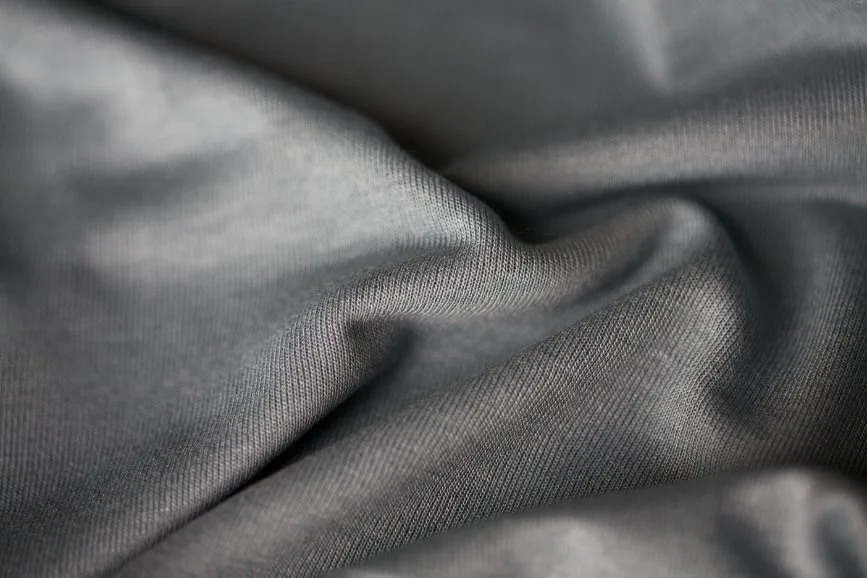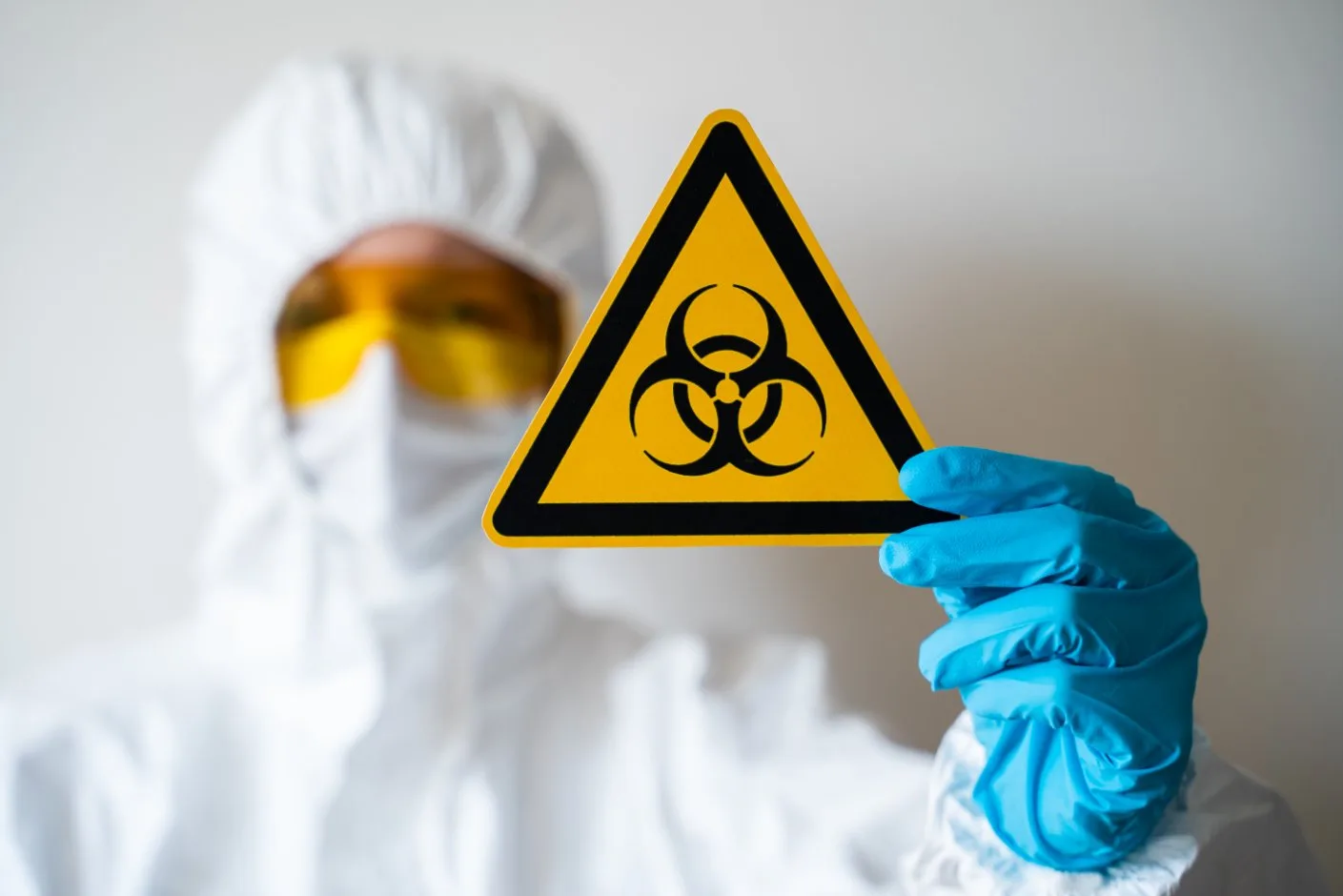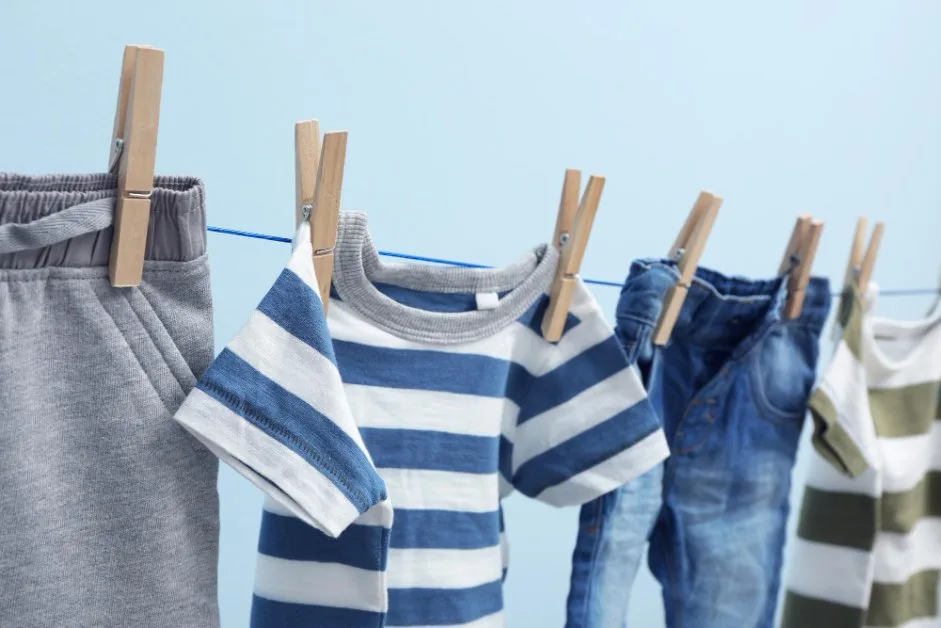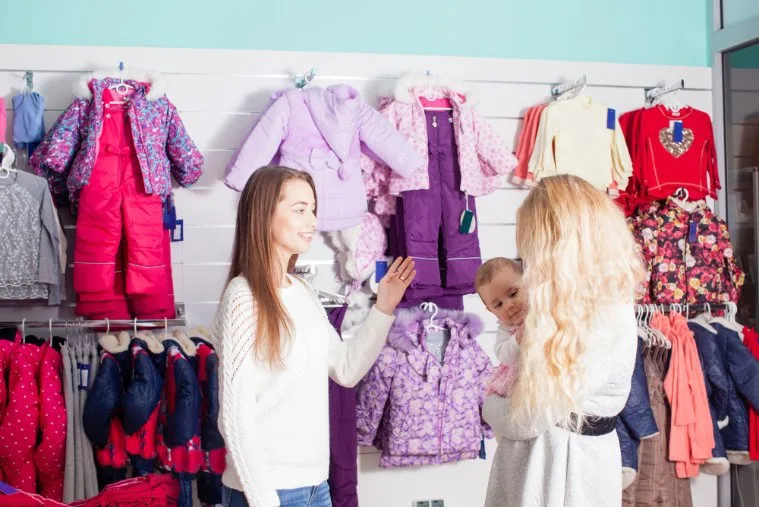A comprehensive guide to children’s sleepwear safety, flame retardant regulations, and how to choose the safest pajamas for your kids without compromising on comfort or health
Key Takeaways
- Not all children’s clothes are flame retardant, but sleepwear for ages 9 months to size 14 must meet federal flammability standards
- Parents can choose between flame-resistant synthetic pajamas or snug-fitting cotton pajamas without chemical treatments
- Recent recalls show many pajamas still violate safety standards, making label checking essential
- Organic cotton tight-fitting pajamas offer the safest alternative to chemical flame retardants
- Proper care and maintenance are crucial for preserving flame retardant properties
Safety Statistics That Matter
Table of Contents
- Understanding Flame Retardant Clothing
- Current Flammability Standards and Regulations
- Recent Pajama Recalls and Safety Violations
- Materials Used in Children’s Sleepwear
- Health Concerns and Chemical Safety
- Safe Brand Recommendations and Shopping Guide
- Care and Maintenance Guidelines
- How to Choose the Safest Sleepwear
- Special Situations and Considerations
- Frequently Asked Questions
- Conclusion
Understanding Flame Retardant Clothing

Children’s sleepwear safety regulations exist to protect kids from burn injuries, but understanding what makes clothes flame retardant can be confusing for parents. Federal law requires that pajamas and sleepwear for children aged 9 months through size 14 must either be made from flame-resistant materials or fit snugly against the child’s body.
How Flame Protection Works
Small Flame Contact
Flame retardants protect against brief contact with candles, lighters, or stove flames
Slows Burning
Chemicals slow flame spread, giving time to remove clothing or extinguish fire
Not for House Fires
Sleepwear flame resistance doesn’t protect against large fires – evacuation is key
What Does Flame Retardant Mean?
When clothing is labeled “flame retardant,” it means the fabric has been treated with special chemicals designed to slow down or prevent the material from catching fire when exposed to small flames. These chemicals work by either creating a barrier that prevents oxygen from feeding the fire or by releasing gases that dilute the flammable gases from the fabric.
Flame retardant clothes help protect children if they come near fire sources like candles, heaters, or gas stoves. However, these garments are not fireproof and will not protect against large fires or house fires where evacuation is the primary safety concern.
Difference Between Flame Resistance and Flame Retardancy
Understanding the distinction between these terms is crucial for parents making informed choices:
Watch: Real Pajama Fire Safety Testing
This video demonstrates how different fabrics react to flame testing, showing why proper sleepwear standards matter.
- Flame resistant clothing is made from fibers that naturally don’t burn easily. Polyester, for example, is considered inherently flame resistant because it tends to melt rather than ignite quickly.
- Flame retardant clothing uses chemical treatments applied to fabrics during manufacturing. These treatments can diminish over time with washing and wear.
How Children’s Sleepwear Meets Safety Standards
(Chemical or natural)
(Cotton without chemicals)
Current Flammability Standards and Regulations
The Consumer Product Safety Commission (CPSC) enforces strict guidelines for children’s sleepwear through federal regulations codified in 16 CFR parts 1615 and 1616. These standards were established to prevent burn injuries and have been updated as recently as 2024 to clarify testing procedures and equipment requirements.
Consumer Product Safety Commission Guidelines
The CPSC requires that pajamas and other sleepwear for children aged 9 months through size 14 must meet specific flammability standards. These standards help reduce the risk of clothing catching fire during sleep when fires may go unnoticed.
Some children’s sleepwear must be made from flame-resistant fabrics. If not, the clothes need to be tight-fitting, which lowers the chance they will catch fire quickly. The CPSC posts detailed rules for manufacturers to verify that garments are safe for sale.
Important Note: Babies under 9 months are exempt from these regulations because they have limited mobility and are typically supervised, making them less likely to come into contact with open flames.
Federal Regulations and Flammability Requirements
Federal regulations in the United States set legal requirements for flammability in children’s clothing. The main rule comes from the Flammable Fabrics Act (FFA). This law requires certain fabric types and finished garments to pass official fire tests before being sold as children’s sleepwear.
If pajamas or nightgowns fail these tests, they cannot be marketed as sleepwear for children under 15. Flame-resistant fabrics, such as polyester, are often used because they are less likely to burn. Alternatively, the garment can be designed to fit tightly, which reduces air spaces that fuel fire spread.
Char Length in Flammability Testing
The “char length” is a key measurement during flammability testing. This test measures how far a fabric burns up from the bottom after being exposed to a small flame. For children’s sleepwear, a maximum char length is allowed by law – usually 7 inches for fabric samples.
If the burned, or “charred,” area goes over this limit, the fabric fails the test. Only garments passing this part of the test can be sold as children’s sleepwear. Fabric that is naturally flame-resistant often shows much shorter char length, while loosely fitted and untreated cotton usually burns faster and fails.
Recent Pajama Recalls and Safety Violations
⚠️ 2024-2025 Pajama Recalls
Current Safety Alert: Multiple major retailers have had pajama recalls due to flammability violations, including Forever 21, SHEIN, Duluth Trading Company, and various online sellers. These recalls demonstrate that safety violations remain a current concern for parents.
Recent recalls highlight ongoing issues with children’s sleepwear compliance. In 2024 and 2025 alone, the CPSC has issued recalls for:
- Forever 21: 20 different styles of children’s pajamas sold nationwide for violating flammability regulations
- SHEIN: Multiple pajama sets sold exclusively online that failed to meet federal standards
- SWOMOG (Amazon seller): Two-piece pajama sets in satin and ribbed modal fabrics
- Duluth Trading Company: Children’s holiday pajama sets made of 100% cotton
- Marie-Chantal: Organic cotton nightgowns and pajama sets sold at high-end retailers
- Ivy City: Mini Bella Bunny and Camille pajamas with and without feathers
These recalls show that even major retailers sometimes fail to meet federal standards, making it essential for parents to understand how to identify compliant sleepwear.
Why Do Recalls Happen?
Common reasons for pajama recalls include:
- Fabrics that burn too quickly in testing
- Loose-fitting designs without proper flame retardant treatment
- Incorrect labeling that doesn’t warn about flammability risks
- Manufacturing changes that compromise safety standards
- Imported products that don’t meet US safety requirements
Materials Used in Children’s Sleepwear

The choice of fabric determines whether chemical flame retardants are necessary and affects both safety and comfort for children. Understanding different fabric options helps parents make informed decisions.
Synthetic Fabrics and Their Properties
Synthetic fabrics like polyester, nylon, and acetate are commonly used in children’s sleepwear because they can meet flammability standards without additional chemical treatments. Polyester is particularly popular because it tends to melt and shrink away from flames rather than supporting combustion.
Why Do Manufacturers Use Synthetics?
- They are less likely to ignite than untreated cotton
- Synthetics are often cheaper and more durable
- No additional chemical treatments required
- Consistent performance across different styles
Role of Polyester in Children’s Sleepwear
Polyester makes up a large part of the children’s sleepwear market because polyester is considered “inherently flame resistant.” When exposed to fire, polyester tends to melt instead of supporting a flame, which reduces the risk of burns.
Manufacturers often use 100% polyester, or blends with other synthetics, to avoid having to add chemical flame retardants. Polyester sleepwear can meet government safety standards due to its melting properties and close-fitting designs.
Are Polyester Pajamas Treated with Flame Retardant?
Most polyester pajamas don’t need additional flame retardant treatment because polyester is inherently flame resistant. However, some manufacturers may add treatments for extra safety or to meet specific standards. The flame-resistant nature of polyester is built into the fiber itself during manufacturing.
100% Cotton and Cotton Fabrics
Cotton is a popular fabric for kids’ clothes, but 100% cotton, when untreated, is very flammable. Regulations require “loose-fitting” cotton pajamas to be treated with special flame retardant chemicals to meet safety standards.
Some cotton pajamas will say “For Snug Fit – Not Flame Resistant” on the label. This means they are safe if worn tightly and kept away from open flames. When treated, cotton sleepwear will be labeled as “flame resistant,” but these treatments can wash out over time, making label instructions important.
Are Cotton Clothes Flame Resistant?
Natural cotton is not flame resistant and burns easily. However, cotton can be treated with flame retardant chemicals, or used in snug-fitting designs that meet safety standards without chemicals. The choice depends on the garment’s design and intended use.
| Fabric Type | Flame Resistant | Chemical Treatment | Fit Requirement | Best For | Pros | Cons |
|---|---|---|---|---|---|---|
| Polyester | Yes (natural) | None needed | Any fit | Easy care, durability | Low maintenance, consistent safety | Poor breathability, synthetic feel |
| Treated Cotton | Yes (chemical) | Required | Any fit | Comfort, loose styles | Soft, comfortable, any style | Chemical exposure, treatment can fade |
| Snug Cotton | No | None | Must be snug | Chemical-free option | Natural, breathable, no chemicals | Limited styles, must fit properly |
| Wool | Yes (natural) | None needed | Any fit | Temperature regulation | Natural flame resistance, warm | More expensive, special care needed |
What Qualifies as Flame Resistant Clothing?
For clothing to qualify as flame resistant, it must pass standardized flammability tests. This includes fabrics that either naturally resist ignition or have been treated with approved flame retardant chemicals. The most flame retardant fabrics include treated wool, specially processed polyester, and chemically treated cotton blends.
What is the Most Flame Retardant Fabric?
Wool is naturally the most flame resistant fabric, followed by treated aramid fibers and specially processed polyester. For children’s sleepwear, treated polyester and wool blends offer the best protection while remaining comfortable for sleep.
Health Concerns and Chemical Safety

While flame retardants serve an important safety purpose, some chemicals used in these treatments have raised health concerns among parents and researchers.
Types of Chemical Flame Retardants
There are several types of chemical flame retardants that can be found in children’s clothing. The most common include brominated, chlorinated, and phosphate-based flame retardants.
One of the best-known is Tris (2,3-dibromopropyl) phosphate, sometimes called “Tris.” It was used in children’s sleepwear but was later banned because it was found to be harmful. After Tris, some manufacturers switched to using chlorinated and phosphate-based flame retardants.
Historical Chemical Issues
In the 1970s, children’s pajamas were treated with brominated Tris, which was later banned after studies found it to be carcinogenic and absorbed through the skin. This was replaced with chlorinated Tris, which also raised DNA damage concerns and was subsequently removed from children’s sleepwear.
Potential Health Concerns, Including Carcinogenic Risks
Some chemical flame retardants have raised health concerns. Studies found certain flame retardants, such as Tris, may be carcinogenic, meaning they could raise cancer risk in humans. Tris was removed from use in children’s clothes after it was linked to health problems.
Other flame retardants may not be fully tested for long-term safety, but experts worry they could affect young children. Risks could include skin irritation or hormone problems after repeated exposure.
Current Chemical Flame Retardants
Today’s flame retardants include:
- Organophosphate compounds (OPFRs): Widely used but with limited long-term safety data
- Phosphate-based treatments: Generally considered safer alternatives
- Inorganic compounds: Such as antimony oxides
- Halogenated compounds: Including some newer brominated and chlorinated options
Health Research Findings
Recent studies suggest that some organophosphate flame retardants may be linked to neurotoxicity and developmental issues. However, experts note that exposure levels from properly manufactured sleepwear are generally considered low risk compared to other sources of chemical exposure.
Is Flame-Resistant Clothing Toxic to Humans?
Current flame-resistant clothing is designed to be safe for regular use. The CPSC requires that any chemicals used in children’s sleepwear be non-toxic under normal wearing conditions. However, parents concerned about chemical exposure can choose snug-fitting organic cotton alternatives.
Based on current research, experts believe that the benefits of flame protection generally outweigh the potential risks from chemical exposure. However, the choice between chemically treated and snug-fitting alternatives allows parents to make decisions based on their comfort level.
Safe Brand Recommendations and Shopping Guide

Finding safe, compliant children’s sleepwear doesn’t require shopping at expensive boutiques. Many mainstream and organic brands offer excellent options for parents seeking chemical-free or safely treated pajamas.
Trusted Flame Retardant-Free Brands
Hanna Andersson
GOTS-certified organic cotton, snug-fitting designs, clear safety labeling. Over 60% of products are OEKO-TEX Standard 100 certified. Premium quality with excellent durability.
Burt’s Bees Baby
100% organic cotton, tight-fitting pajamas available in sizes up to 5T. Budget-friendly and widely available at Target. Clear yellow hang tags indicate chemical-free status.
Monica + Andy
GOTS-certified organic cotton, ethically manufactured in India, comprehensive size range from newborn to big kids. Stylish designs with excellent safety standards.
Kate Quinn
Organic cotton basics with stylish designs, though primarily snap closures rather than zippers for nighttime changes. Great for sensitive skin.
L’ovedbaby
GOTS-certified, ethically produced baby clothes with organic cotton sleepwear. Focuses on sustainable and safe manufacturing practices.
Touched by Nature
Budget-friendly option often GOTS-certified, available at major retailers. Good quality organic cotton at accessible prices.
Are Burt’s Bees Pajamas Flame Retardant?
Burt’s Bees Baby pajamas are specifically designed as snug-fitting organic cotton sleepwear that meets federal safety standards without flame retardant chemicals. They carry the required yellow hang tag indicating “not flame resistant, wear snug fitting.” This makes them an excellent choice for parents seeking chemical-free sleepwear.
Budget-Friendly Options
- Target: Carries Burt’s Bees Baby and sometimes Touched by Nature organic lines
- Amazon: Filter searches for “100% cotton baby pajamas” or “GOTS certified sleepwear”
- Costco: Occasionally stocks organic, snug-fitting pajamas at competitive prices
- Walmart: Growing selection of organic cotton children’s sleepwear
- Thrift stores: Often have well-washed organic cotton pajamas that have had chemicals removed through multiple wash cycles
What About Major Retailers?
Does H&M Use Flame Retardants?
H&M’s children’s sleepwear typically uses synthetic materials like polyester that are inherently flame resistant, rather than applying chemical treatments. However, parents should always check labels and safety information for specific items, as practices can vary by product line.
Why Do Zara Baby Clothes Say Keep Away from Fire?
The “keep away from fire” warning appears on many children’s clothes, including those from Zara, as a standard safety precaution. This warning is required on garments that don’t meet flame-resistant standards and serves as a reminder that regular clothing is more flammable than treated sleepwear.
Why Do Kids Pajamas Say Keep Away from Fire?
Children’s pajamas display “keep away from fire” warnings when they don’t meet flame-resistant standards or are designed as snug-fitting alternatives. This warning is federally mandated to remind parents that these garments require extra caution around heat sources.
What Baby Clothes Are Flame Retardant Free?
Snug-fitting organic cotton pajamas from brands like Burt’s Bees Baby, Hanna Andersson, and Monica + Andy are flame retardant free. Look for yellow tags stating “not flame resistant, wear snug fitting.” Additionally, clothing not intended for sleepwear (like daywear) typically doesn’t contain flame retardants.
Care and Maintenance Guidelines

Proper care is essential for maintaining the safety properties of flame-resistant sleepwear and ensuring snug-fitting pajamas continue to provide adequate protection.
Impact of Fabric Softeners and Detergents
Fabric softeners can leave a coating on clothes that breaks down flame retardant chemicals. For this reason, parents should never use liquid or sheet softeners when washing flame retardant pajamas or sleepwear.
Some detergents with added scents or heavy oils might also reduce the effectiveness of flame resistance. Use only mild, plain detergents without extra additives or bleach. This helps flame retardant properties stay strong through many wash cycles.
Washing Guidelines for Flame-Resistant Sleepwear:
- No fabric softener (liquid or sheets)
- Use mild detergent without fragrances
- Avoid “deep clean” or heavy-duty formulas
- Wash in cool or warm water (never hot)
- Use low heat setting when drying
- Follow manufacturer’s care instructions exactly
- Replace when garments show signs of wear
Preserving Flame Retardant Qualities
Maintaining the flame resistance of children’s clothes means following the manufacturer’s instructions closely. Most flame retardant fabrics are made to stand up to normal washing, but high temperatures can be a problem.
Always wash these clothes in cool or warm water, not hot. When drying, use a low heat setting. High dryer heat can damage the special coating or fibers. Also check labels for any specific rules, such as recommended water temperatures or drying methods.
Do Flame Retardants Wash Out of Clothes?
Modern flame retardants are designed to withstand at least 50 wash cycles while maintaining their protective properties. However, improper care can reduce effectiveness. The regulations require that fabrics demonstrate their flame resistance after being laundered at least 50 times, but you cannot really wash the flame retardants out completely.
Factors that can reduce flame retardant effectiveness include:
- Fabric softeners: Create a coating that interferes with flame retardant chemicals
- High temperatures: Can break down chemical treatments
- Strong detergents: May strip protective coatings over time
- Bleach: Can neutralize flame retardant chemicals
How to Wash Fireproof Clothing?
To properly wash flame-resistant clothing, follow these specific steps:
- Sort flame-resistant garments separately
- Use mild detergent without additives
- Set water temperature to warm or cool
- Avoid fabric softeners completely
- Use gentle or normal wash cycle
- Dry on low heat or air dry
- Inspect for wear after washing
How Long Does Fire Retardant Clothing Last?
Flame-resistant clothing typically maintains its protective properties for 12-18 months of regular use, depending on care and washing frequency. Signs it’s time to replace include fabric thinning, loose fit, or visible wear patterns. The garment should be replaced when it no longer fits snugly (for cotton pajamas) or shows significant wear.
How to Remove Fire Retardant from Clothing?
Fire retardants cannot be completely removed from clothing through washing. They’re designed to be permanent and withstand multiple wash cycles. If parents want chemical-free sleepwear, they should choose snug-fitting organic cotton instead rather than trying to remove treatments from existing garments.
How to Choose the Safest Sleepwear

Parents have two main paths to ensure their children’s sleepwear meets federal safety standards while addressing personal preferences about chemical exposure.
Guidelines for Parents
Parents should always look for children’s sleepwear labeled as either flame resistant or tight fitting. These types meet the U.S. safety standards for reducing fire hazards. Flame-resistant pajamas are made from fabrics that slow down burning and may even self-extinguish if exposed to a small flame. Tight-fitting pajamas do not have extra fabric that could catch fire easily and are less likely to ignite.
Checking the product’s label helps confirm if the sleepwear meets flammability regulations. Avoid loose or baggy pajamas not designed as sleepwear. Loose-fitting clothes can catch fire more easily and may not have been tested for bedtime safety.
Should Kids’ Clothes Be Flame Resistant?
Only sleepwear for children 9 months to size 14 is required to be flame resistant or snug-fitting. Regular daywear doesn’t need flame resistance, though parents should teach fire safety and keep children away from open flames. The focus on sleepwear comes from the higher risk during sleep when children may be near heat sources.
Parent Decision Tree for Safe Sleepwear
↓
Snug-fitting organic cotton
↓
Flame-resistant synthetics
↓
Wool or treated natural fibers
What to Look for When Shopping
For Flame-Resistant Pajamas:
- Labels stating “flame resistant” or “meets CPSC standards”
- Polyester or treated fabric content
- Any fit style acceptable
- Proper sizing for child’s current measurements
- Care instructions that mention flame resistance
For Snug-Fitting Cotton Pajamas:
- Yellow hang tag stating “not flame resistant, wear snug fitting”
- 100% cotton or cotton blend fabric content
- GOTS or organic certification preferred
- Proper snug fit according to manufacturer’s size chart
- Clear washing instructions for maintaining fit
What is the Yellow Tag on Kids Pajamas?
The yellow hang tag is a federal requirement for snug-fitting pajamas that don’t use flame retardant chemicals. This tag warns parents that the garment must fit snugly to meet safety standards and includes specific care instructions to maintain the proper fit. The tag typically reads “For child’s safety, garment should fit snugly. This garment is not flame resistant.”
How to Know if Clothes Have Flame Retardant?
To determine if clothing contains flame retardants, parents should:
- Check care labels for phrases like “flame resistant” or “flame retardant”
- Look for “meets CPSC flammability standards” statements
- Notice if snug-fitting cotton has yellow warning tags
- Check fabric content – polyester is often inherently flame resistant
- Review manufacturer websites for safety information
How to Tell if Fabric is Flame-Retardant?
Parents can identify flame-retardant fabrics by checking labels and understanding fabric types. Synthetic materials like polyester are often inherently flame resistant, while cotton requires either chemical treatment or snug fitting to meet standards. Professional testing is the only definitive way to confirm flame resistance.
Red Flags to Avoid
Safety Warning Signs
- Handmade pajamas from Etsy or similar platforms (often don’t meet federal standards)
- Labels mentioning “TB 117” compliance (indicates furniture flame retardants)
- Loose-fitting cotton pajamas without flame retardant labeling
- Missing care instruction labels
- Pajamas marketed as “play clothes” rather than sleepwear
- Unclear or missing country of origin information
- Prices that seem too good to be true for claimed organic status
Alternatives to Flame Retardant Clothing
If parents prefer to avoid flame-retardant chemicals, they can choose snug-fitting cotton pajamas instead. Cotton is not flame resistant, but tight-fitting designs are safer because there is less fabric to catch fire. The law allows sleepwear from size 9 months to 14 years to be snug-fitting instead of flame resistant if specific guidelines are met.
Parents should stay away from adding untreated cotton or flannel garments to their child’s bedtime routine, unless the clothes are labeled as sleepwear and fit tightly. Standard cotton play clothes and other casual wear don’t always meet flammability standards for sleepwear and could increase risks.
Special Situations and Considerations
Children’s Sleepwear Categories and Flammability
Children’s sleepwear can be grouped into different types based on their fit, style, and fire safety standards. The material, cut, and required flammability protection can vary and are important for parents to know.
Loose-Fitting Sleepwear: Risks and Requirements
Loose-fitting sleepwear, such as baggy pajamas, some robes, and nightgowns, can catch fire more easily if exposed to a flame. By law, these garments must either be made from flame-resistant fabrics or treated with special chemicals to slow down burning.
Some common materials used are polyester and certain treated cottons. Wool is naturally flame-resistant, but loose-cut designs still pose a risk because they can brush against open flames more easily.
Tight-Fitting Sleepwear and Flame Retardant Standards
Tight-fitting sleepwear, including many long johns and snug-fitting pajamas, is regulated differently. Because these clothes fit closely to the body, they are much less likely to catch fire or keep burning if exposed to a flame.
Federal rules require this type of sleepwear to meet specific size guidelines to qualify as “tight-fitting.” As a result, these pajamas do not need chemical flame retardants or special flame-resistant fabrics. Instead, their close fit offers protection by limiting the amount of oxygen between the garment and skin.
Are Children’s Pajamas Fire Safe?
Children’s pajamas that comply with CPSC standards are designed to be fire safe for their intended use – protection against small flame sources like candles or heaters. However, no clothing provides protection against house fires, where smoke inhalation and rapid evacuation are the primary concerns.
What Clothes Are Non Flammable for Kids?
No clothing is truly non-flammable, but wool, treated polyester, and chemically treated cotton offer the best flame resistance. Snug-fitting organic cotton pajamas provide safety without chemical treatments. The least flammable options include:
- Wool garments (naturally flame resistant)
- Treated polyester sleepwear
- Snug-fitting organic cotton pajamas
- Garments that meet CPSC flammability standards
Which Are Considered the Three Hazards That Require Flame Resistant Clothing?
The three main fire hazards that flame-resistant children’s sleepwear protects against are:
- Contact with open flames: Candles, gas stoves, fireplaces, lighters
- Heat sources: Space heaters, radiators, hot surfaces, heating vents
- Sparks and embers: From fireplaces, grills, electrical sources, or outdoor fires
It’s important to note that flame-resistant sleepwear is designed for brief contact with small flame sources, not for protection during house fires or large-scale fire emergencies.
Do Children’s Clothes Have to be Fireproof?
Children’s clothes do not have to be fireproof – only sleepwear has specific flammability requirements. Regular clothing like everyday wear follows different, less stringent standards. The focus on sleepwear safety comes from the higher risk during sleep when children may be near heat sources and have slower reaction times.
Why Do Kids Wear Tight Pajamas?
Children wear tight pajamas because snug-fitting designs are safer – there’s less fabric to catch fire and less air space between the garment and skin to fuel flames. This design allows cotton pajamas to meet safety standards without chemical treatments, providing a flame retardant-free option for parents.
What Type of Clothing is the Least Flammable?
Tightly woven wool and synthetic fabrics like polyester are least flammable. Loose-weave cotton, especially flannel, is among the most flammable materials and should be avoided for sleepwear unless treated. The construction and weave of fabric affects flammability as much as the fiber type.
What is the Most Flammable Clothing Fabric?
Loose-weave cotton, especially flannel and flannelette, are the most flammable fabrics. Acetate and some rayon blends also burn very quickly, which is why they’re rarely used in children’s sleepwear. These materials can ignite rapidly and burn intensely.
What Fabrics Are Not Fire-Resistant?
Natural fibers that are not fire-resistant include:
- Untreated cotton (especially loose weaves)
- Linen
- Most rayon and acetate
- Untreated hemp
- Silk (burns but doesn’t spread flames as quickly)
What Type of Fabric is Flame Retardant?
Fabrics that are naturally or artificially flame retardant include:
- Wool (naturally flame resistant)
- Polyester (inherently flame resistant)
- Treated cotton with chemical flame retardants
- Modacrylic fibers
- Aramid fibers (like Nomex)
- Treated wool blends
How Do They Make Pajamas Flame Retardant?
Manufacturers make pajamas flame retardant through several methods:
- Chemical treatments: Applying flame retardant chemicals to finished fabrics
- Fiber modification: Adding flame retardants during fiber production
- Inherent resistance: Using naturally flame-resistant fibers like polyester
- Protective coatings: Applying surface treatments that resist ignition
- Blend creation: Combining flame-resistant and regular fibers
Which Clothes Cannot Catch Fire Easily?
Clothing that resists catching fire includes wool garments, properly treated polyester sleepwear, and chemically treated cotton. Snug-fitting designs also reduce fire risk regardless of fabric type. The key is either natural flame resistance or proper safety treatments combined with appropriate fit.
Frequently Asked Questions
Complete Shopping Guide and International Perspectives

Where to Shop for Safe Pajamas
Online Retailers:
- Amazon: Filter for “organic cotton pajamas” and check seller ratings carefully
- Target.com: Reliable for Burt’s Bees Baby and Cat & Jack organic lines
- Brand websites: Direct from Hanna Andersson, Monica + Andy, Kate Quinn for best selection
- Specialty organic retailers: The Honest Company, Burt’s Bees Baby direct
- Department stores: Nordstrom, Macy’s often carry premium organic brands
Physical Stores:
- Target: Best selection of budget-friendly organic options
- Nordstrom/Nordstrom Rack: Higher-end organic and flame-resistant brands
- Buy Buy Baby: Wide selection with knowledgeable staff
- Local children’s boutiques: Often carry organic and specialty brands
- Costco: Seasonal organic pajama offerings at competitive prices
Budget Planning and Cost Considerations
| Price Range | Options Available | Best Brands | Where to Shop | Quality Expectations |
|---|---|---|---|---|
| $10-25 | Basic organic cotton, some synthetic | Cat & Jack, Touched by Nature | Target, Amazon, Walmart | Good for basic needs, shorter lifespan |
| $25-50 | Premium organic, better construction | Burt’s Bees, Monica + Andy | Target, brand websites, boutiques | Excellent quality, longer wear |
| $50+ | Luxury organic, special features | Hanna Andersson, Kate Quinn | Brand websites, high-end retailers | Premium quality, hand-me-down worthy |
International Safety Standards
Different countries handle children’s sleepwear safety with varying approaches:
- European Union: Requires “Keep Away From Fire” warnings on loose-fitting sleepwear but allows more flexibility in design approaches
- Canada: Has similar standards to the US but requires clearer labeling of flame retardant treatments and washing instructions
- Australia: Focuses more on consumer education and warnings rather than mandatory chemical treatments
- United Kingdom: Uses strict design requirements for children’s nightwear, emphasizing fit over chemical treatments
Seasonal Considerations
Summer Sleepwear Safety:
- Lightweight organic cotton shorts and short-sleeve sets
- Breathable bamboo blends (verify compliance)
- Moisture-wicking properties for hot climates
- Ensure loose styles still meet flame retardant requirements
Winter Sleepwear Safety:
- Snug-fitting cotton flannel when available
- Flame-resistant fleece options
- Layering with compliant underlayers
- Avoid loose robes unless flame-resistant
Emerging Technologies and Future Trends
Safer Flame Retardant Alternatives
The textile industry continues developing safer alternatives to traditional flame retardants:
- Bio-based treatments: Using natural compounds like casein proteins and chitosan
- Nano-technology: Microscopic coatings that provide protection without deep chemical absorption
- Smart fabrics: Materials that change properties when exposed to heat
- Improved polyester: Enhanced synthetic fibers with better flame resistance
- Natural fiber treatments: Safer ways to treat cotton and other natural materials
Industry Innovations
Recent developments in children’s sleepwear safety include:
- More brands offering organic cotton snug-fit alternatives
- Improved testing methods for flame resistance
- Better consumer education about safety options
- Enhanced labeling requirements for clarity
- Stricter enforcement of existing safety standards
Parent Action Plan and Safety Checklist

Immediate Action Items for Parents:
- Review current pajama collection for compliance labels
- Check fit of snug-fitting cotton pajamas
- Sign up for CPSC recall alerts
- Research preferred brands for future purchases
- Create a fire safety plan for your home
- Teach children basic fire safety rules
- Replace any non-compliant sleepwear
- Establish proper washing routine for flame-resistant items
Long-term Safety Strategy
Building a Safe Sleep Environment
Remember that sleepwear safety is just one component of overall fire safety. The most effective protection comes from a comprehensive approach that includes smoke detectors, fire escape plans, and teaching children about fire dangers.
Teaching Children About Fire Safety
While choosing safe sleepwear is important, educating children about fire safety provides the best long-term protection:
- Teach children to stay away from all heat sources
- Practice fire escape routes regularly
- Install and maintain smoke detectors
- Keep fire extinguishers accessible
- Store matches and lighters securely
- Supervise children around any open flames
Conclusion
Choosing safe sleepwear for children requires balancing federal safety requirements, personal preferences about chemical exposure, and practical considerations like comfort and cost. The most important takeaway is that parents have multiple safe options available, regardless of their priorities or budget constraints.
Key Recommendations Summary:
- Always verify compliance: Whether choosing flame-resistant or snug-fitting options, ensure the sleepwear meets CPSC standards through proper labeling and trusted manufacturers.
- Prioritize proper fit: Snug-fitting organic cotton pajamas offer the safest chemical-free option, but they must fit properly according to manufacturer guidelines to be effective.
- Stay informed about recalls: Regularly review CPSC recall notices, especially for online purchases from lesser-known sellers. Recent recalls from major retailers show this remains an active concern.
- Invest in quality brands: Well-established brands like Hanna Andersson, Burt’s Bees Baby, and Monica + Andy often provide better safety assurance and longer wear, making them cost-effective choices.
- Follow proper care instructions: Maintaining flame retardant properties or proper fit requires following specific washing and drying guidelines without shortcuts.
- Consider the whole safety picture: Sleepwear safety works best as part of comprehensive fire safety that includes smoke detectors, escape plans, and child education.
Making the Right Choice for Your Family
For parents concerned about chemical exposure, snug-fitting organic cotton pajamas provide an excellent alternative to chemically treated options. These garments meet the same federal safety standards while avoiding flame retardant chemicals entirely.
Parents who prioritize convenience and durability may prefer flame-resistant synthetic options that require less attention to fit and offer more style flexibility. Both approaches are valid and safe when products meet CPSC standards.
The Bottom Line
The current regulatory framework provides parents with safe choices while the industry continues developing even safer alternatives. Whether choosing chemically treated flame-resistant pajamas or snug-fitting organic cotton, the key is selecting compliant products from reputable manufacturers.
Recent recall data shows that compliance issues persist even among major retailers, making informed consumer choices more important than ever. Parents who understand labeling requirements, know trusted brands, and stay informed about recalls can confidently provide safe sleepwear for their children.
Looking Forward
The textile industry continues evolving toward safer flame retardant alternatives and improved manufacturing standards. New technologies like bio-based treatments and nano-coatings may eventually provide even safer options for parents concerned about chemical exposure.
Meanwhile, the proven effectiveness of snug-fitting organic cotton designs offers an immediate solution for families seeking chemical-free sleepwear without compromising safety.
Final Takeaways
Essential Points to Remember:
- Federal law requires children’s sleepwear (9 months to size 14) to meet specific safety standards
- Parents can choose between flame-resistant synthetics or snug-fitting organic cotton
- Proper labeling helps identify compliant products and care requirements
- Recent recalls emphasize the importance of buying from trusted brands
- Safe sleepwear is just one part of comprehensive home fire safety
- Quality brands offer both safety assurance and better value over time
- Proper care maintains safety properties and extends garment life
- Teaching children fire safety provides the best long-term protection
By making informed choices about children’s sleepwear, parents can ensure their kids stay safe and comfortable while sleeping, contributing to better rest and greater peace of mind for the entire family. The investment in proper sleepwear pays dividends in safety, comfort, and parental confidence.
References and Additional Resources
- Consumer Product Safety Commission – Flammable Fabrics Act
- National Institute of Environmental Health Sciences – Flame Retardants
- ASTM International – Standard Test Method for Flammability of Apparel Textiles
Disclaimer: This article provides general information about children’s sleepwear safety. Always consult product labels, manufacturer guidelines, and current CPSC regulations for the most up-to-date safety requirements. Fire safety practices should be part of a comprehensive home safety plan.

